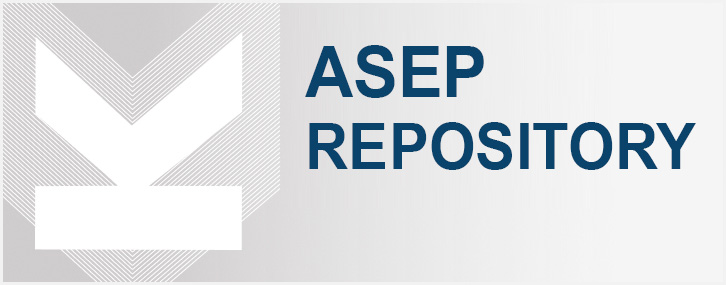Data Management, DMP
How to create a DMP?
You can create a Data Management Plan (DMP) as part of your project documentation using a standard text editor, following templates provided by specific funding agencies. For example: MŠMT (OP JAK – Výzva Špičkový výzkum), TAČR (SIGMA – First public tender), Horizon EUROPE.
HOWEVER – we highly recommend using online tools that can significantly simplify the creation and editing of DMPs. Some funders require multiple versions of the DMP throughout the project’s duration.
KNAV provides access to the online tool AV CR FAIR Wizard. This tool includes step-by-step explanations for all questions, links to relevant resources, and an automatic evaluation of FAIR principles and other metrics, with explanatory comments. The tool guides users through the DMP creation process, helping them complete it efficiently through structured questions with predefined answers—eliminating the need to manually write an additional project appendix.
For more information, visit the Data Management page.
Where can I find funder templates (MSMT, GA CR, etc.) in FAIR Wizard?
FAIR Wizard distinguishes between two types of templates:
- Project templates define the structure of the questionnaire used to create a Data Management Plan (DMP).
- Document templates format the exported version of the questionnaire into output files such as PDF, DOCX, HTML, or JSON.
Research funders in the Czech Republic (MSMT, GA CR, etc.) are gradually publishing their own document templates for DMPs, reflecting their specific requirements for the structure and formatting of the final document. These templates are available directly within the FAIR Wizard interface — inside a specific project, under the “Documents” tab. The process of creating documents is explained in detail in the manual.
If more institutions collaborate on a project, does each institution create its own DMP, or is there a single DMP?
A Data Management Plan (DMP) is always created as a single document for each project. Therefore, if multiple institutions collaborate on a project, they create only one shared DMP.
If you want to create a DMP using the AVCR FAIR Wizard tool for a project that involves researchers from other institutions, these researchers can create an account in FAIR Wizard and thus participate in the creation of the DMP.
Are examples of well-filled DMPs available anywhere?
DMPs are primarily the result of a good data management process. Thus, their form is always mainly dependent on the form of the research project, the type of data used, the approach of the research team and, last but not least, the internal data management policy of the specific institute.
The AVCR FAIR Wizard, an online service for the creation of DMPs facilitated by the LCAS for the whole CAS, contains a guided explanation of all questions, links to other relevant resources and to relevant passages from the overview book:
“Data stewardship for open science: implementing FAIR principles” Mons, B.. Boca Raton: CRC Press, Taylor & Francis Group, 2018. ISBN 978-1-4987-5317-3.
This tool automatically assesses the degree of fulfillment of the FAIR principles and other metrics with explanatory comments during the completion process. Thus, when using the AV CR FAIR Wizard, there is no need to look for inspiration in already completed DMPs from other projects.
However, to get a better idea of what the final shape looks like, one can look at examples of DMP from MUNI:
- DMP Example: Alliance for Life Sciences: From Strategies to Actions in Central and Eastern Europe (A4L_ACTIONS)
- DMP Example: Investigating the transcriptional regulation of auxin biosynthesis in Arabidopsis embryo (ITRABAE)
- DMP Example: Genetic and Community Diversity for Plant Stress Resilience (GENCOVER)
- DMP Example: Integration of RNA Biology for Next-Generation Scientists (INTEG-RNA)
- DMP Example: VŠCHT DMP Example – DSW-Horizon Europe
- DMP Example: Ashy layers: Monjukli Depe
You can also generally refer to the large collection of DMPs published in DMP Online or on the Digital Curation Centre website. Public DMPs can also be found within the Zenodo repository. Another interesting source of publicly available DMPs is the Vienna University repository. Last but not least, it is also an interesting source of completed DMPs in Cordis.
Unfortunately, none of these resources can be searched thematically. Systematically assessing the quality of these documents is another difficult task. In the case of the Vienna University DMPs, the quality assessment was carried out by the project “Horizon 2020 DMPs what beneficiaries think and what we can learn from their experience (“DMP Use Case Project”)“.
Repositories
Why choose the ASEP institutional repository for your data instead of Zenodo?
ASEP is an institutional repository of the Academy of Sciences of the Czech Republic, so it is easier for users to negotiate its modifications or above-standard access (exceptions from size limitations, modifications of the system according to user demand… etc.).
We offer more flexibility for individual requests, modification of the form, modification of the workflow according to requirements and practice. There is a network of trained contact persons at individual departments of the CAS.
Linking to bibliographic records stored in the same repository, information on funding (projects), export of the link to the data record to RIV (Current Research Information System)
What to fill in a DMP when storing data in the ASEP data repository?
If you are storing your data in the ASEP data repository, here is information about the repository for completing your DMP. The information is structured according to questions taken from the DMP template for Horizon in the NTK repository.
Open Access
Do the benefits of Transformational agreements (APC discounts) apply to our Institute?
The benefits of the individual transformation agreements only apply to consortium members for specific publishers. If you (or your department) are not involved in these consortia within CzechELIB, the benefits of these agreements unfortunately do not apply to you. In this case, you still need to pay the APC from your own resources and take these expenses into account when writing your projects – they are usually considered as eligible project costs.
Just to be on the safe side, please note that some funders do not recognise APC fees for hybrid journals – and you should therefore be aware of this when planning your research project.
Can the Library of the Czech Academy of Sciences (LCAS) arrange payment of the Article Publishing Charges (APC/OA fee) for our Institute?
Unfortunately, payment of the APC/OA fee for other CAS Institutes is not possible. If “LCAS” is listed in the “List of selected publishers and CAS institutes involved in relevant consortia“, the terms of the contract apply only to LCAS (and its authors).
If and only if “CAS” is listed, this applies to all CAS departments.
LCAS only in one case pays for the entire CAS and therefore offers free publishing only for journals published by EMERALD.
Will LCAS negotiate electronic information resources for AV centrally?
LCAS centrally purchases bibliographic citation databases Web of Science (+ analytical tool InCites) and Scopus for the whole CAS. Among the full-text databases are ProQuest (journals), Ebsco (journals), JSTOR and Emerald. We also purchase electronic journals PNAS and Science for all institutes of the CAS (6 institutes have individual contracts for now, LCAS plans to include them under a single central contract after the expiry of the existing contracts, which is from 1 January 2026).
The other electronic information resources are handled by the institutes individually and separately. The vast majority of them are acquired through CzechELib, where they can be nominated at the beginning of each calendar year (https://www.czechelib.cz/cs/292-faqs#A1).
The Bronze Way – Is it “Open Access”?
The bronze way is a way o publishing when the text is freely available on the publishers’ website but without a proper license.
WARNING – This is not true “Open Access”, there is no proper licensing (public licenses, e.g. CC-BY). Funders do not recognise this form of access as OA precisely because of the legal uncertainty.
Terms of OA in Open Policy Finder (formerly Sherpa Romeo) – if the publisher specifies more than one form of deposit (“Author Self-Archiving”), does that mean that the author can choose which one to use, or is the form of publication specified in the license agreement?
Open Policy Finder serves only as a signpost with an overview of the possibilities and a link to the publisher’s website. It is important to check with the author exactly what is in the license agreement. The terms and conditions should be stated in the contract. The author should also know what licenses and form of publication/storage of the article will meet the terms of the funder.
Last updated on July 10, 2025


